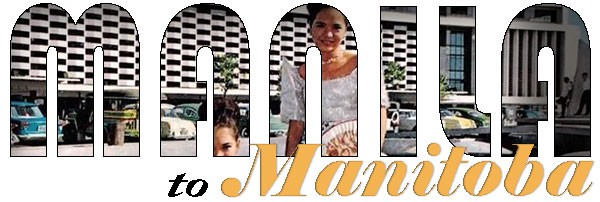 |
| Nelson Mandela (Source: Freedomarchives.org) |
Nelson Mandela passed away yesterday at 95 years. He will be remembered as the “Father of South Africa” and a model for peace and moral leadership. No doubt, the world will miss him. He was the only living icon to embody a nation in sacrifice, hope, and reconciliation. In this blog post, I would like to reflect on what his passing might mean for us Filipino-Canadians. I would like to take a brief look into our shared colonial histories and our enduring legacy for identity and freedom. After a brief overview of Mandela’s life, I will then explore historic parallels between South Africa, the Philippines, and Canada.
Rolihlahla Mandela was born in 1918 in the village of Mvezo. He acquired his Christian name “Nelson” later in childhood (as was the custom). As a young adult, he helped transform the African National Congress (ANC) into a new revolutionary form. In 1960, soon after the Sharpeville Massacre, he formed its militarist sect. South Africa’s white minority government then outlawed the ANC. Mandela was targeted for his “subversive” leadership. In 1964, he was sentenced to life in prison. Fast forward 26 years to 1990, Mandela was finally freed. He became South Africa’s first black president only 4 years later. He governed towards unity and peace – a message he shared equally between blacks and whites.
| Nuns pray in front of soldiers in EDSA (25 February 1986) (Source theblacktwig.wordpress.com) |
Mandela’s death strikes a strong chord for Filipinos with personal connections to the Philippines’ own recent revolutionary movement. As Mandela endured 26 years in captivity, Filipinos may also remember the 9 years they lived under Martial Law (1972-1981). They may also recall the tumultuous decades when President Ferdinand Marcos held office from 1965 to 1986. Unemployment, violence, political strife were rampant and freedoms were repressed. By 1983, upon the sudden death of Marcos’ political opponent Benigno “Ninoy” Aquino, tensions had boiled over for the people to take matters into their own hands. The People Power movement demanded the proper reinstatement of democracy. In 1986, at the culmination of this movement, Ninoy’s widow, Cory Aquino, was elected President. To this, their son and current Philippine President, Benigno “Noynoy” Aquino Jr., commented today on the relationship his late mother had with Mandela. He states:
On a more personal note, I recall with gratitude and humility the kind words he told me during his visit to the Philippines when I was still a Representative. He told me then, “You chose your parents well.” My mother admired him; like all of us, she would have been deeply saddened by his passing.
 |
| Idle No More poster (source idlenomore.ca |
In Canada, Mandela’s passing represents an unfinished plight for first nations peoples. It is in fact Canada’s tutelage on the “Indian problem” that Afrikaaner leaders implemented apartheid in South Africa throughout the 1940s and 1950s. There are parallels between South Africa’s bantustans and Canada’s Indian reserves. Despite numerous ammendments, Canada’s Indian Act still prescribes to its original 1859 form. Under the Act, Indigenous peoples were to be governed separate from the white Canadian populace under a different set of racially motivated laws. Their ethnic status and citizenship; income and employment; as well as values and homesteads were to be defined by the ruling government. To segregate and isolate, limit and control the freedoms of Canada’s indigenous peoples soon yielded the term “apartheid” for South Africa as a means of governing blacks. Mandela is now revered for helping end those days. He stood against apartheid and won. In Canada however, we are still grappling to understand what the treaties or the Indian Act actually means to us all – whether we are Aboriginal or not.
So, what parallels can Filipino-Canadians draw from these snapshots in history? We will see Mandela in the many tributes to come in differing images from youthful and fiery to elderly and wise. His near century of living will remind us of difficult times in both our Filipino and Canadian histories. Perhaps, we can recall a youthful Mandela oranizing against apartheid when we hear of the next Idle No More gathering in Winnipeg. Or, we can imagine a triumphant free Mandela when we celebrate the anniversary of the Philippines’ People Power movement. We can choose to remember his will to empower and his tenacity to struggle in the same ways our histories as Filipinos and Canadians teach us. I hope we will be wise enough to listen.
Sources
Benigno Aquino Jr. (6 December 2013) “Statement of President Aquino on the passing of Nelson Mandela” <http://www.gov.ph/2013/12/06/statement-of-president-aquino-on-the-passing-of-nelson-mandela-december-6-2013/>
Faith Karimi. (5 December 2013) “Nelson Mandela, anti-apartheid icon and father of modern South Africa, dies.” CNN http://www.cnn.com/2013/12/05/world/africa/nelson-mandela/
Maria-Carolina Cambre “Terminologies of Control: Tracing the Canadian-South African Connection in a Word” Politikon (April 2007) 34.1: 19-34.
